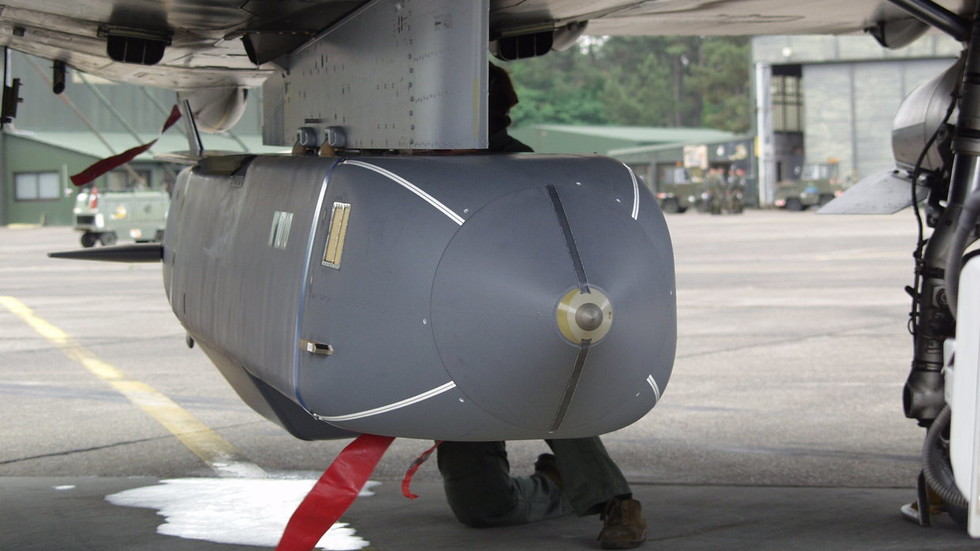In a significant escalation of the ongoing conflict between Ukraine and Russia, reports have emerged that the UK is following the US in permitting Ukraine to use Western long-range weaponry against targets in Russia. Key among these arms are the British-supplied Storm Shadow missiles, which Ukraine has reportedly launched at sites in Russia’s Kursk Region. This development comes shortly after the US granted Ukraine permission to use its ATACMS missiles for long-range strikes, marking a shift in the dynamics of international military support for Kyiv. Although the UK government has yet to officially confirm these reports, British officials have purportedly indicated that Defense Secretary John Healey has had discussions with his Ukrainian counterpart, reinforcing the UK’s commitment to support Ukraine on the battlefield. Such assertiveness from the UK is expected amid concerns over how Russia might respond to these provocations.
Despite the unconfirmed reports of missile launches, images allegedly showing debris from the Storm Shadow missiles have emerged on Telegram channels, sparking further claims of their usage. News outlets report consulting weapons experts who assert that the debris corresponds to the characteristics of the British-supplied missiles, despite an inability to verify their exact timing or location. As the UK navigates this delicate situation, it does so mindful of the potential repercussions from a vengeful Russia. The timing of these missile strikes also coincides with allegations concerning North Korean military involvement in the fighting, which has added another layer of complexity to the situation and likely influenced the UK’s decision-making process.
In the aftermath of the missile strikes, the Russian Defense Ministry has yet to provide an official statement regarding the alleged use of Storm Shadows in its territory. However, various Telegram channels have been active in reporting that up to 12 Storm Shadow missiles were launched in the Kursk Region, with claims that they were intercepted by Russian air defense systems. Ukrainian President Volodymyr Zelenskyy has asserted that he received approval from several Western countries to target locations deep within Russia with long-range rockets. This assertion may potentially fuel tensions between NATO and Moscow, given that Moscow has long considered such attacks as evidence of NATO’s direct involvement in the conflict.
Russian President Vladimir Putin has weighed in on the evolving situation, stressing that the deployment of Western long-range missiles by Ukraine marks a significant alteration in the nature of the conflict. His administration has signaled that they view these actions not just as direct challenges to its military operations but as a potential justification for the use of nuclear weapons in response to what they perceive as a conventional attack orchestrated by a proxy of a nuclear-armed power. This pointed rhetoric from Moscow comes hand-in-hand with a recent revision of Russia’s nuclear doctrine, indicating that there has been an escalatory shift in the Kremlin’s strategic framework regarding the use of mass destruction weapons in the context of international skirmishes.
The geopolitical implications of this conflict are profound, as both Western nations and Russia are negotiating the boundaries of military support and retaliation. The tension is palpable, with Western leaders navigating the fine line between providing sufficient assistance to Ukraine while avoiding actions that could provoke an all-out war with Russia. Analysts indicate that the dynamics of NATO’s involvement are changing, and any further escalation could lead to irreversible consequences, marking a dangerous high-stakes game with global ramifications. As the situation evolves, it remains to be seen how the interactions between Ukraine and its Western allies will shape future military strategies and diplomatic efforts.
Given the complexity of the ongoing war and the multitude of actors involved, it is clear that events surrounding the use of long-range missiles are not merely tactical moves; they are part of a larger strategic picture. International responses, including those from the US, UK, and other NATO member states, will play a critical role in determining the trajectory of this conflict. As Ukrainian forces continue to utilize Western supplies, the persistence of Russian threats and possible counters, including nuclear posturing, illustrates the precarious nature of the current geopolitical landscape. The world watches closely, as any miscalculations could lead to dire consequences and a further deepening of hostilities that have already resulted in significant human suffering and instability across Europe and beyond.

